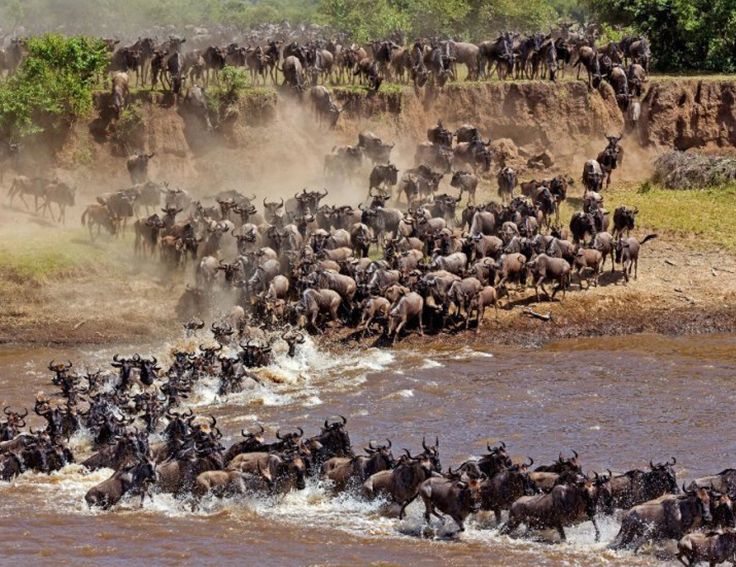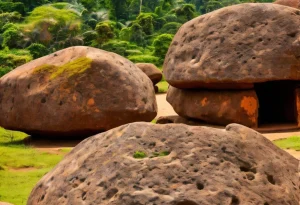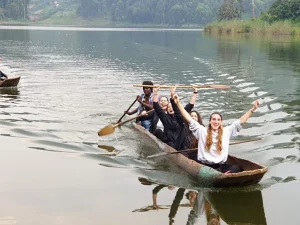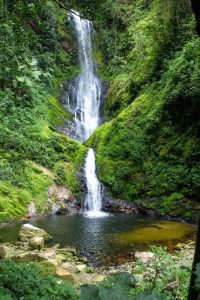The wildebeest migration—often referred to as “The Great Migration”—is one of the most spectacular natural events on Earth. Over 1.5 million wildebeest, accompanied by hundreds of thousands of zebras and gazelles, move across the Serengeti-Mara ecosystem in a continuous cycle of survival driven by rainfall patterns and the search for fresh grazing. If you’re planning a safari to witness this awe-inspiring movement, understanding the best time for the wildebeest migration is key to choosing where and when to go.
What Is the Wildebeest Migration?
The Great Migration is a year-round journey of wildebeest and other grazing animals across Tanzania’s Serengeti National Park and Kenya’s Maasai Mara National Reserve. These animals move in a clockwise direction through the ecosystem, driven by the seasonal rains and availability of water and grass.
This massive movement also attracts predators like lions, cheetahs, hyenas, and crocodiles—making it one of the best wildlife spectacles on the planet.
When Is the Best Time to See the Wildebeest Migration?
The best time to see the wildebeest migration depends on what part of the journey you want to witness. The migration doesn’t happen all at once; it takes place in different stages throughout the year. Here’s a month-by-month breakdown of where the herds are likely to be and what kind of action you can expect.
January to March: Calving Season in the Southern Serengeti
Best location: Ndutu plains, southern Serengeti (Tanzania)
Experience: Calving season and predator action
From late January to March, the herds are spread across the southern Serengeti and Ndutu region. This is calving season, when over 400,000 calves are born in just a few weeks. The flat, grassy plains provide excellent visibility, and predators are always nearby. Expect dramatic encounters between lions, hyenas, and vulnerable newborns.
Why visit during this time?
- See thousands of baby wildebeests being born
- High predator interaction and hunting scenes
- Great for photographers and families
- Lodges are more available compared to peak river crossing season
April to May: Rainy Season and Herd Movement North
Best location: Central and Western Serengeti
Experience: Low visitor traffic, scenic landscapes
In April and May, the herds start to move northward through the central and western Serengeti. This is the long rainy season, so the roads can be muddy, and game viewing is more unpredictable. However, the scenery is lush and green, and the crowds are fewer.
Why visit during this time?
- Lower safari costs and fewer tourists
- Beautiful green landscapes and dramatic skies
- Good for birdwatching
- Less competition for lodge space
Note: Some lodges may close during this period due to weather, so choose accommodations carefully.
June to July: Grumeti River Crossing
Best location: Western Serengeti (Grumeti Reserve)
Experience: River crossings and dramatic predator-prey interactions
By June, the herds reach the Grumeti River, one of the most thrilling parts of the migration. Though smaller than the Mara River, the Grumeti has its own share of crocodile-infested waters. River crossings begin in earnest in June and early July.
Why visit during this time?
- See the first major river crossings of the year
- Excellent predator activity
- Good chance of witnessing a crossing without the intense crowds of the Maasai Mara
July to September: Mara River Crossings and the Peak of the Migration
Best location: Northern Serengeti (Tanzania) and Maasai Mara (Kenya)
Experience: Spectacular Mara River crossings
This is peak wildebeest migration safari season, especially between mid-July and September. The herds move into the northern Serengeti and cross into Kenya’s Maasai Mara, attempting the dangerous Mara River crossings. Crocodiles lie in wait, and predators stalk the herds from both sides.
Why visit during this time?
- Iconic river crossings at the Mara
- Excellent predator-prey action
- High density of wildlife and superb photo opportunities
- Best time for classic migration safaris
Note: This is the most popular time to visit, so accommodations book far in advance and prices are at their highest.
October to November: Return to the Serengeti
Best location: Maasai Mara (early October), Northern and Central Serengeti (late October to November)
Experience: Gradual movement south as rains return
By October, the herds start moving back into Tanzania, retracing their steps through the northern and central Serengeti. The pace quickens as the short rains begin, and the animals return to the Ndutu plains in preparation for calving once again.
Why visit during this time?
- Good wildlife sightings without peak-season crowds
- Beautiful golden light for photography
- Still a chance to catch late river crossings in early October
December: Settling in the Southern Serengeti
Best location: Southern Serengeti and Ndutu
Experience: Calm before the calving season
In December, the herds begin settling in the southern Serengeti, where they will prepare for the next calving season. This is a quieter period, but still excellent for wildlife viewing and scenic landscapes.
Why visit during this time?
- Start of the migration loop again
- Warm weather and green plains
- Ideal for those avoiding crowds and seeking value
Summary Table: Best Times and Locations
| Month | Location | Key Experience |
|---|---|---|
| Jan – Mar | Southern Serengeti (Ndutu) | Calving season and predators |
| Apr – May | Central/Western Serengeti | Low-season safari and lush greenery |
| Jun – Jul | Grumeti (Western Serengeti) | First river crossings |
| Jul – Sept | Northern Serengeti / Maasai Mara | Mara River crossings and peak action |
| Oct – Nov | Northern/Central Serengeti | Return migration and fewer crowds |
| December | Southern Serengeti (Ndutu) | Pre-calving and scenic views |
Final Thoughts
The best time for a wildebeest migration safari depends on the kind of experience you’re looking for. If witnessing dramatic Mara River crossings is your goal, plan your trip between July and September. For a more peaceful and intimate safari with baby wildebeests and predator activity, visit during the January to March calving season.
Each phase of the migration offers a unique window into one of nature’s most extraordinary journeys. Whichever time you choose, it’s important to book well in advance, especially for the peak migration months, and to work with a knowledgeable tour operator who understands the movement patterns of the herds.




